The flag of Kosovo marks a significant milestone in the nation’s journey. It’s a symbol that captures the essence of its aspirations and the diverse cultural tapestry that defines it. This emblem, arising from a period of profound transformation, speaks to Kosovo’s commitment to peace and its role on the global stage.
Flag of Kosovo
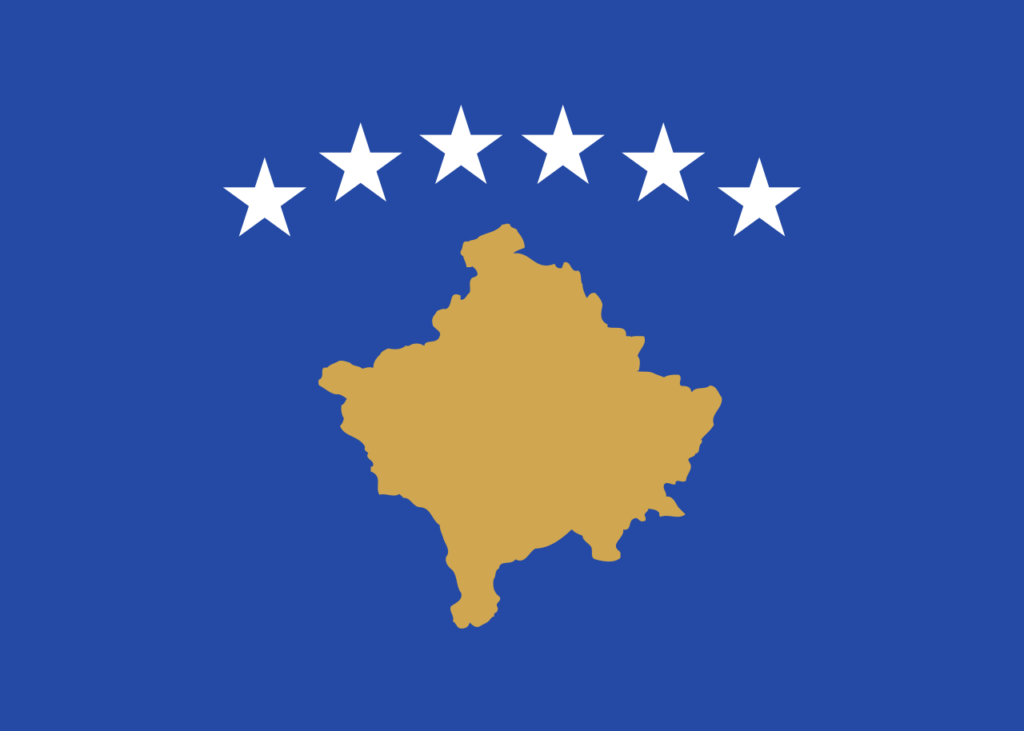
The flag of Kosovo presents a distinctive and meaningful design. Central to the flag is a golden map of Kosovo, symbolizing the geographical and political identity of the nation. Above the map, an arc of six white stars spans, each representing one of Kosovo’s significant ethnic groups: Albanians, Serbs, Turks, Gorani, Roma, and Bosniaks.
This design choice is an aesthetic and a profound statement of Kosovo’s commitment to inclusivity and recognition of its population. The placement of the map at the heart of the flag emphasizes the country’s sovereignty and self-determination.
Flag of Kosovo: Color Palette
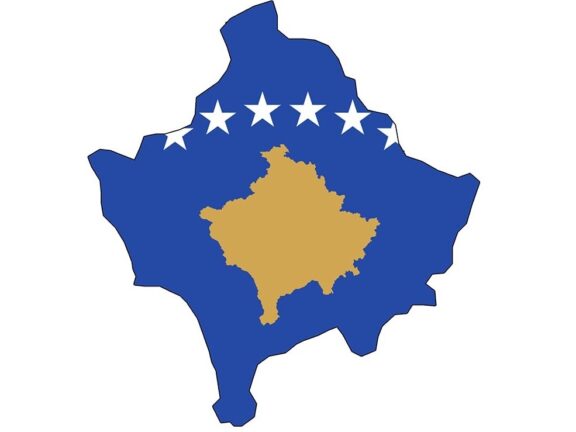
Kosovo Flag Emoji: 🇽🇰
Kosovo’s flag’s color palette is visually striking and symbolically rich. Comprising primarily of blue, gold, and white, each hue plays a significant role in the flag’s overall representation.
These colors are aesthetically pleasing and carry a deeper meaning, contributing to an eye-catching flag emblematic of Kosovo’s national narrative.
Meaning of Each Color
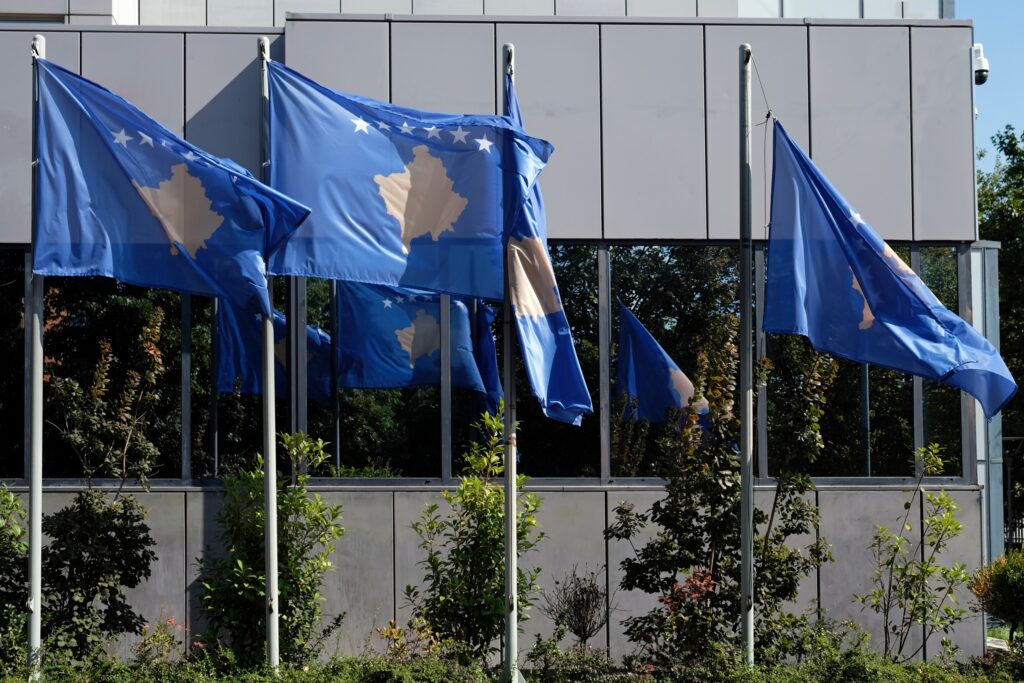
Dark Blue
The dark blue field of Kosovo’s flag symbolizes freedom, peace, and the sky above the nation. This color, often associated with tranquility and stability, represents Kosovo’s aspirations for a peaceful future.
The use of blue also aligns with the colors of the European Union, subtly hinting at Kosovo’s European ambitions and its alignment with the values of unity and solidarity that the EU represents.
Gold
The gold-colored map of Kosovo at the center of the flag symbolizes the nation’s rich cultural heritage and the cherished value of its territorial integrity. Gold, as a color, often represents treasure, wealth, or something of great value.
In the context of Kosovo’s flag, it highlights the importance and preciousness of the nation’s land and identity, resonating with the citizens’ pride in their homeland.
White
The white stars on the flag, each representing one of Kosovo’s major ethnic groups, signify peace and purity. The color white stands as a stark contrast to the complexities of the region’s history, anchoring the flag in a narrative of reconciliation and new beginnings.
It symbolizes Kosovo’s commitment to harmony amid diversity and the peaceful coexistence of its various ethnic communities.
Kosovo’s Coat of Arms
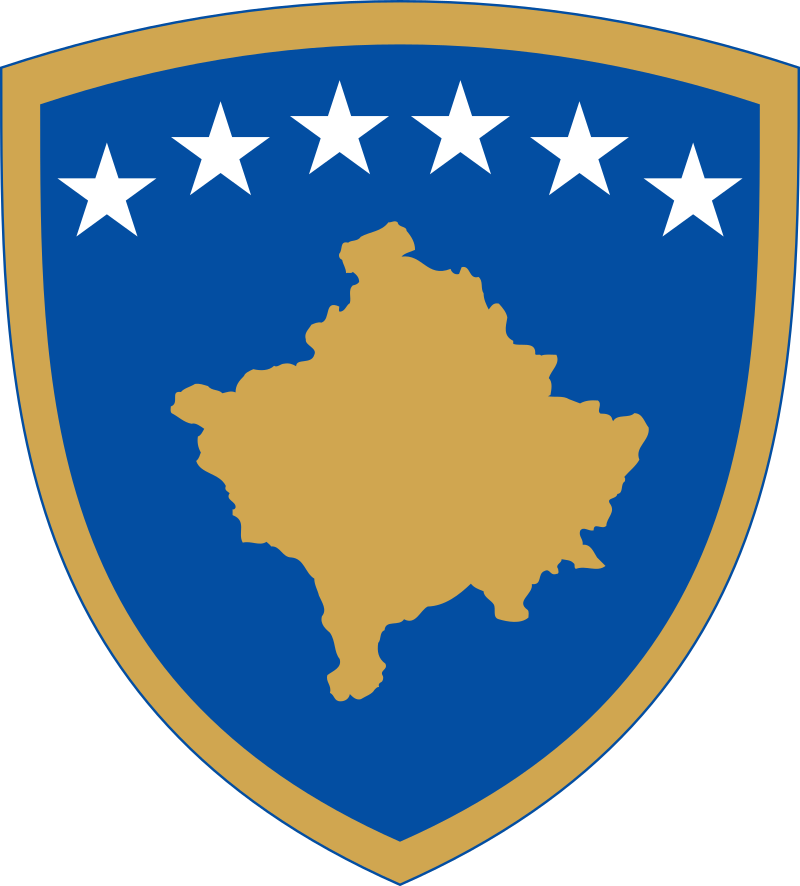
Unlike traditional coats of arms that often incorporate historical familial or territorial symbols, Kosovo’s coat of arms adopts a modern and simplified design that reflects its status as a young nation focused on its current identity and forward-looking vision.
The Coat of Arms of Kosovo, reflective of its nation’s character, is characterized by several key elements:
- Golden Shield: The central feature, symbolizing the nation’s resilience and rich cultural heritage.
- Six White Stars: Positioned above the shield, each star represents one of Kosovo’s major ethnic groups: Albanians, Serbs, Turks, Gorani, Roma, and Bosniaks. These stars emphasize the nation’s commitment to inclusivity and diversity.
- Vibrant Blue Background: Surrounding the shield, the blue mirrors the flag and signifies peace, freedom, and the sky above Kosovo. This color also aligns the coat of arms with European aspirations and values.
Overall, Kosovo’s coat of arms symbolizes the nation’s journey towards sovereignty, multicultural society, and aspirations for a harmonious and prosperous future.
Historical Evolution and the Meaning Behind Changes
The current flag of Kosovo, adopted upon its declaration of independence in 2008, marks a significant shift from its historical associations. Before this, Kosovo did not have a distinct flag as a province within Serbia and Yugoslavia.
The region was represented by the national flags of Yugoslavia and later Serbia, which reflected broader national identities rather than Kosovo’s unique character.
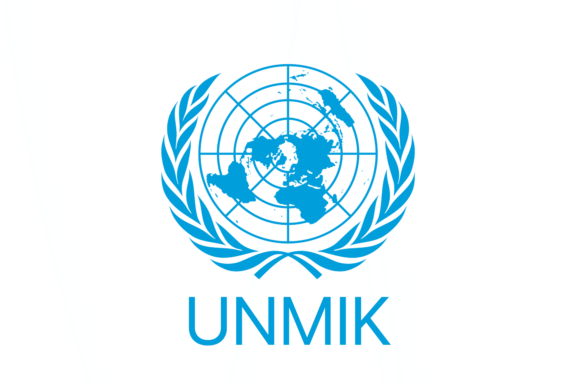
The need for a distinct flag arose as Kosovo sought to establish its identity following a tumultuous period that included intervention by the North Atlantic Treaty Organization (NATO) and subsequent United Nations administration.
With independence, there was a pressing need for Kosovo to establish its national symbols to represent the new country. A flag design competition led to the creation of the current flag, chosen for its neutrality and inclusivity.
The flag’s design, distinct from any historical or ethnic emblems, represents a new chapter for Kosovo. It symbolizes the nation’s European integration aspirations and commitment to a multicultural and multiethnic society.
Overall Symbolic Meaning of the Flag
The flag of Kosovo stands as a symbol of the nation’s journey towards independence and its commitment to a future that embraces diversity and unity. Its design, incorporating a map and stars, uniquely expresses Kosovo’s identity as a sovereign state, emphasizing its place in the world and its dedication to inclusivity among its various ethnic communities.
Similar Flags to the Flag of Kosovo
The flag of Kosovo, with its distinctive use of a geographical map and an array of stars, shares similarities with a select few national flags, primarily due to design elements rather than shared history or cultural exchanges.
Bosnia and Herzegovina
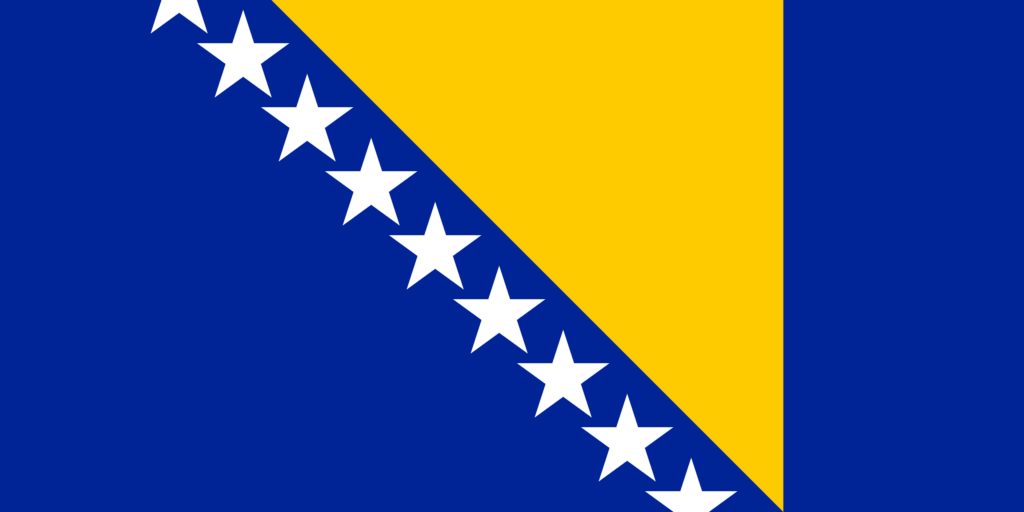
The flag of Bosnia and Herzegovina, while not featuring a map, shares a similarity in its use of stars. It has a line of stars that extends along the diagonal, symbolizing Europe and its aspiration to join the European Union, similar to the symbolism of the stars on Kosovo’s flag.
European Union

While not a national flag, the European Union’s flag resembles Kosovo’s in using stars. The circle of twelve gold stars on a blue field in the EU flag symbolizes unity, solidarity, and harmony among the peoples of Europe.
Kosovo’s flag mirrors this symbolism with its circle of stars, reflecting its aspirations for European integration and the representation of unity among its diverse ethnic groups.
Cyprus
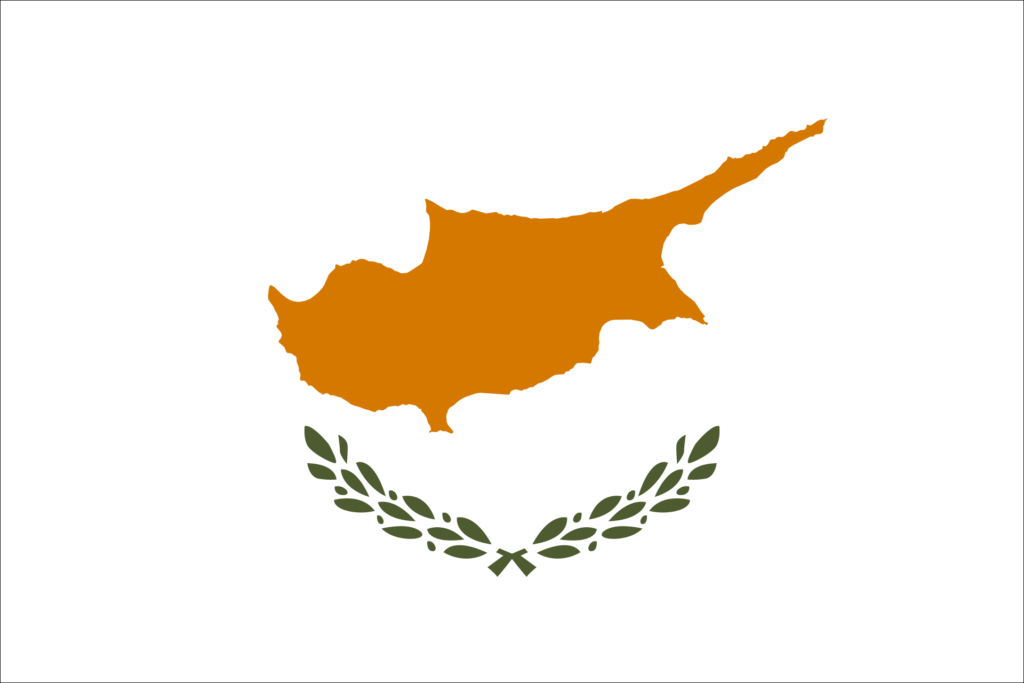
The flag of Cyprus is one of the closest in resemblance to Kosovo’s. It features an outline map of Cyprus in orange or copper, set against a white background, with two green olive branches below.
Like Kosovo, using a map in the flag’s design is a unique element, emphasizing the geographical identity and sovereignty of the nation.
Final Thoughts
With its unique design and symbolism, the flag of Kosovo stands proudly in the global community of flags as a representation of the country’s sovereignty, diversity, and aspirations.
Its significance extends beyond a national emblem, embodying the hopes and pride of Kosovo’s citizens in their nation’s journey and identity.
Image Sources and Copyright Information
- Kosovo Flags Fluttering Outside a Building: © Lensw0rId/Shutterstock